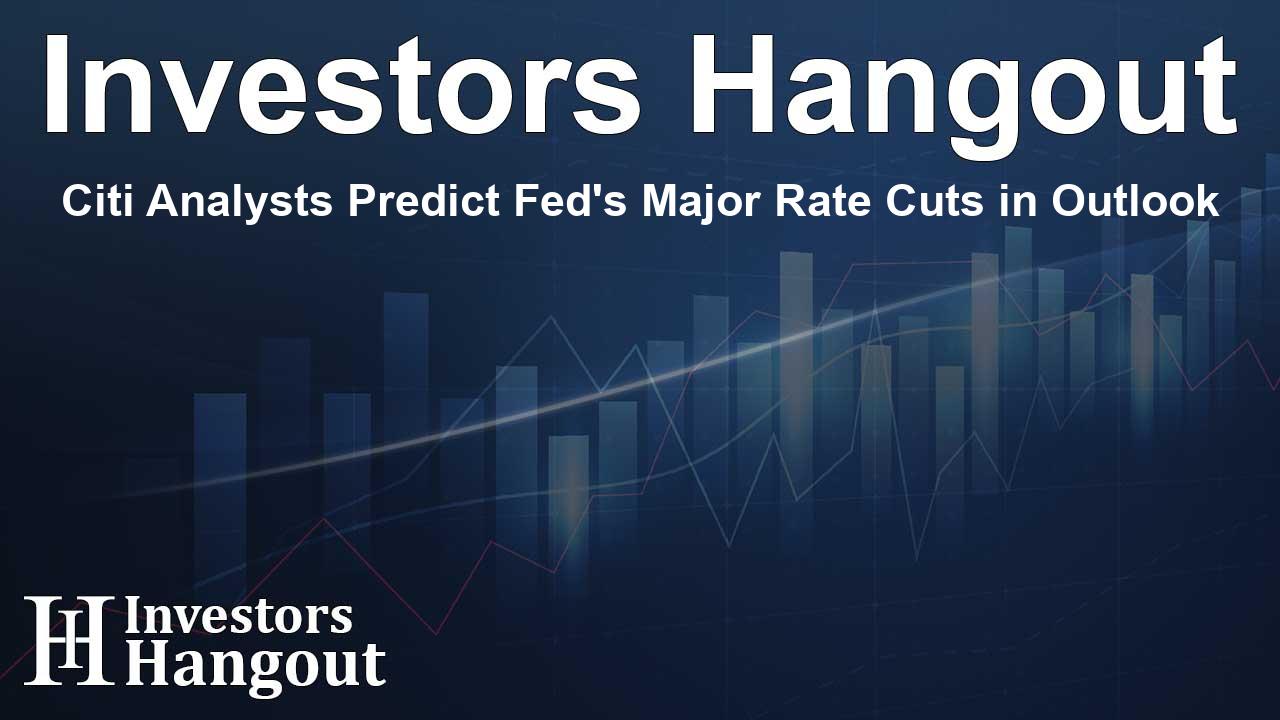Citi Analysts Predict Fed's Major Rate Cuts in Outlook

Citi says the Fed is tilting toward deeper rate cuts
Citi’s analysts now think the Federal Reserve is preparing to cut interest rates more than previously expected. Their view has shifted as the central bank heads into its next policy meeting and weighs how best to support growth while the data change around it. The message is straightforward: the direction of travel hasn’t changed, but the likely size and pace of cuts have. That reassessment, they argue, stems from what the Fed is seeing in the economy right now—and what it wants to signal about the path ahead.
Revisions to the Fed’s projections are likely
According to Citi, Fed officials will probably update the Summary of Economic Projections (SEP) to match current conditions. In practice, that means nudging up the unemployment rate forecast for year-end while marking down the policy rate path. The combination—softer labor market, easier policy—would be a notable shift from earlier expectations. It would also align the formal projections with the way policymakers have been talking about risks and momentum across the economy.
Dots pointing to bigger cuts this year
Citi expects the “dots”—the rate projections submitted by voting Fed members—to cluster around a total of 100 basis points of cuts in the remaining months of this year. That would be a sharp break from the June set, which suggested just one 25 basis point reduction. The change in the dots matters, not just for the headline number, but for the signal it sends: a faster move toward easier policy than the Fed was willing to pencil in a few months ago.
Cooling inflation is shaping the outlook
Slowing inflation has been central to the shift in tone. With price pressures easing, expectations for a more dovish stance have strengthened. Citi anticipates the next inflation release will mark a fourth straight monthly decline, reinforcing the case for policy adjustment. Taken together, the run of data suggests the Fed has more room to support the economy without risking a reacceleration in inflation—though officials will want to see that trend persist.
Markets price more; a 75 bp median would read hawkish
Markets are currently leaning toward roughly 105 basis points of total cuts. Against that backdrop, Citi notes that even a median signal of 75 basis points from the dots could come across as hawkish relative to pricing. In other words, the Fed could point to substantial easing and still look cautious to investors, highlighting the gap between market anticipations and what officials might be ready to endorse on paper.
The rate-cut path won’t be linear
Citi stresses that the sequence of moves matters. What happens in September will set the tone for the rest of the year and help determine the depth of cuts that follow. In their base case, a larger 50 basis point cut in September would open the door to smaller, follow-on moves—25 basis points in November and another 25 in December—adding up to 100 basis points for the year. That step-down approach would be consistent with a front-loaded adjustment and a steadier pace thereafter.
What September could signal next
If, instead, the Fed opts for a 25 basis point move in September, Citi thinks officials could still keep the option open to indicate a larger 50 basis point adjustment later. The point is less about any single meeting and more about the message across meetings: how quickly the Fed intends to ease and under what conditions it might alter the pace. Interest in the upcoming decisions—and the updated SEP—is intense, fueled by an ongoing debate over the economy’s resilience versus its emerging soft spots. The next few meetings may not settle that debate, but they will clarify the note the Fed wants you to hear.
Frequently Asked Questions
What’s the main takeaway from Citi’s outlook?
Citi expects the Fed to cut rates more than previously thought this year, with projections shifting toward a total of about 100 basis points and an earlier, larger move shaping what follows.
Why do the Fed’s “dots” matter here?
The dots summarize where voting Fed members see policy heading. A shift from June’s single 25 basis point cut to 100 basis points this year would signal a meaningfully easier stance.
How is inflation influencing this view?
With inflation slowing and a fourth consecutive monthly decline anticipated, Citi sees more room for the Fed to ease without signaling a rebound in price pressures.
What role does unemployment play in the projections?
Citi expects the Fed to mark up its unemployment forecast for year-end, which pairs with a lower policy rate path in the updated Summary of Economic Projections.
How might September set the tone for the rest of the year?
A 50 basis point cut in September could be followed by 25 basis point moves in November and December; a smaller September move could leave room to indicate a larger cut later, keeping the total easing in focus.
About The Author
Contact Thomas Cooper privately here. Or send an email with ATTN: Thomas Cooper as the subject to contact@investorshangout.com.
About Investors Hangout
Investors Hangout is a leading online stock forum for financial discussion and learning, offering a wide range of free tools and resources. It draws in traders of all levels, who exchange market knowledge, investigate trading tactics, and keep an eye on industry developments in real time. Featuring financial articles, stock message boards, quotes, charts, company profiles, and live news updates. Through cooperative learning and a wealth of informational resources, it helps users from novices creating their first portfolios to experts honing their techniques. Join Investors Hangout today: https://investorshangout.com/
The content of this article is based on factual, publicly available information and does not represent legal, financial, or investment advice. Investors Hangout does not offer financial advice, and the author is not a licensed financial advisor. Consult a qualified advisor before making any financial or investment decisions based on this article. This article should not be considered advice to purchase, sell, or hold any securities or other investments. If any of the material provided here is inaccurate, please contact us for corrections.
